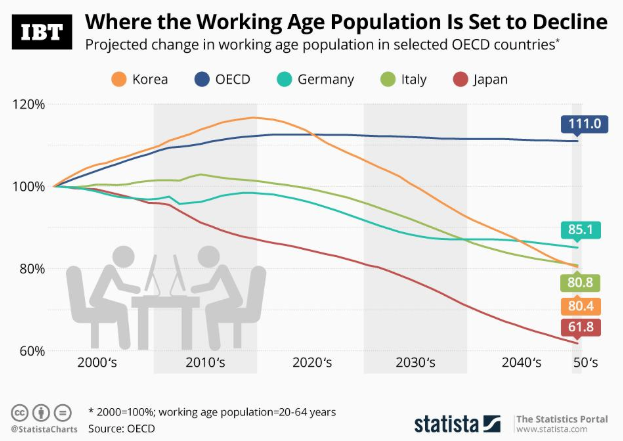Demographic Doom? Germany, Italy, Korea, & Japan Face Workforce Collapse By 2050
Forget the trade war, debt, deflation, automation, and artificial intelligence: one of the most significant threats to the global economy and the future of the world as we know it is demographics.
A new OECD report, published by International Business Times, said Korea, Japan, Germany, and Italy could see their working-age populations decline to dangerously low levels by 2050.
The report took each OECD country’s population between the ages of 20 and 64 in the year 2000 as a base and was able to project the 2050 population. What they discovered was the working class population by 2050 would be 80% of its base year in Korea and Italy. In Japan, the workforce population would be much worse, approximately 60% of its original size.

For the OECD as a whole, there are about 34 countries from around the world, the size of the working age population is expected to increase by 111% of its original size by 2050. Much of the growth will be driven by stable birth rates and growing populations, like Australia and Turkey.
The OECD noted that Japan’s working-age population has been in collapse for nearly three decades. Korea’s working-age population was expanding until just recently but is expected to begin contracting this year.
For countries experiencing a decline in the working-age population, there will be widespread consequences across all aspects of the global economy: as households shrink, so does discretionary spending, and ultimately will impact living space. In developed markets, large cities will see increased pressure on real estate and rent prices for apartments.
In a separate report, we showed how countries around the world are set to experience a decline in the number of children per household in the 2000 – 2030 period. More specifically, looking from 2015 out to 2030, Euromonitor expects developed markets to have a ~20% decline in the number of children per household and developing markets a ~15% decline.
…click on the above link to read the rest of the article…